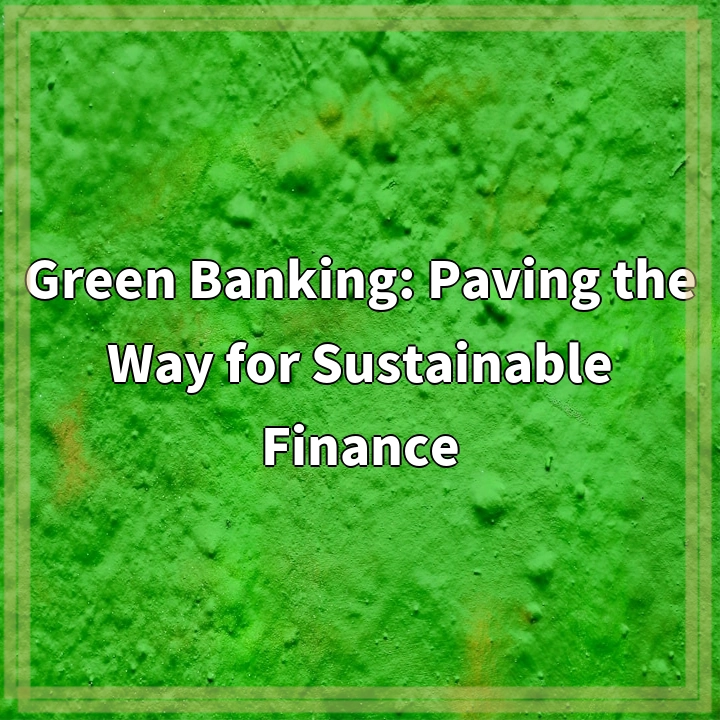
What it is:
Green banking refers to the practice of financial institutions adopting sustainable banking practices that prioritize environmental responsibility. This includes offering financial products and services that support projects aimed at reducing carbon emissions, promoting renewable energy, and encouraging environmentally friendly investments. Green banks seek to leverage capital in ways that not only generate profits but also contribute to the health of the planet. By implementing eco-friendly policies, green banking fosters a more sustainable economy.
Key Features of Green Banking
Green banking incorporates various principles and practices, such as:
- Eco-friendly loans: Reduced interest rates for projects like solar energy installations or energy-efficient home upgrades.
- Sustainable investment products: Investment funds focused on renewable energy companies or sustainable agriculture.
- Carbon offset initiatives: Programs that allow customers to offset their carbon footprints through banking activities.
Real-world Problems
Despite its noble goals, green banking faces a range of real-world challenges that can impede its effectiveness:
Lack of Awareness
One of the primary challenges is the lack of awareness among consumers and businesses regarding the benefits and availability of green banking products. Many individuals remain unaware of how their banking choices can impact the environment, leading to a slower adoption of sustainable financial products.
Limited Product Offerings
Another major problem is the limited availability of green banking products. Many traditional banks do not offer sufficient eco-friendly options, making it difficult for consumers to choose sustainable alternatives. This lack of diversity in offerings can deter customers who are interested in sustainable finance.
Regulatory Hurdles
Regulatory frameworks can also pose challenges to green banking. In some regions, there are insufficient regulations to encourage and enforce sustainable practices in the financial sector. This can lead to uneven playing fields, where not all financial institutions are held to the same standards regarding sustainability.
Greenwashing Concerns
Additionally, the phenomenon of greenwashing—where companies falsely promote their products as environmentally friendly—can undermine the credibility of green banking initiatives. Customers may become skeptical of marketing claims, making them hesitant to engage with green banking products if they suspect they are not genuinely sustainable.
Financial Returns
Finally, many banks face pressure to deliver short-term financial returns to shareholders, which can conflict with the longer-term goals of sustainability. This can result in a reluctance to invest in green projects that may not offer immediate profits, stunting the growth of the green banking sector.

Solutions to Enhance Green Banking
To address the challenges faced by green banking and promote sustainable finance, several solutions can be implemented by financial institutions, regulators, and consumers alike.
Increasing Awareness
Educational initiatives can play a crucial role in raising awareness about green banking. Banks can conduct community outreach programs, seminars, and informational campaigns to inform consumers and businesses about the benefits of sustainable banking practices, highlighting how their choices impact the environment.
Diverse Green Banking Products
Financial institutions should expand their portfolio of green banking products. By developing a wider range of eco-friendly loans, investment options, and savings accounts, banks can provide customers with more opportunities to engage in sustainable finance, catering to various needs and interests.
Strengthening Regulatory Frameworks
Regulators can enhance green banking by establishing comprehensive guidelines that encourage sustainable practices in the financial sector. Creating incentives, such as tax breaks or subsidies for banks that commit to offering green products, can promote a level playing field and foster competition among financial institutions.
Combatting Greenwashing
To address concerns of greenwashing, regulatory bodies should implement strict transparency and accountability measures. Conducting regular audits and requiring clear reporting on the environmental impact of financial products will help build trust among consumers and ensure that green banking claims are legitimate.
Aligning Financial Goals with Sustainability
Banks should consider integrating sustainability into their core financial strategies, balancing the pursuit of profits with long-term environmental goals. By establishing performance metrics related to sustainability, banks can hold themselves accountable and demonstrate their commitment to green initiatives while still meeting financial objectives.















